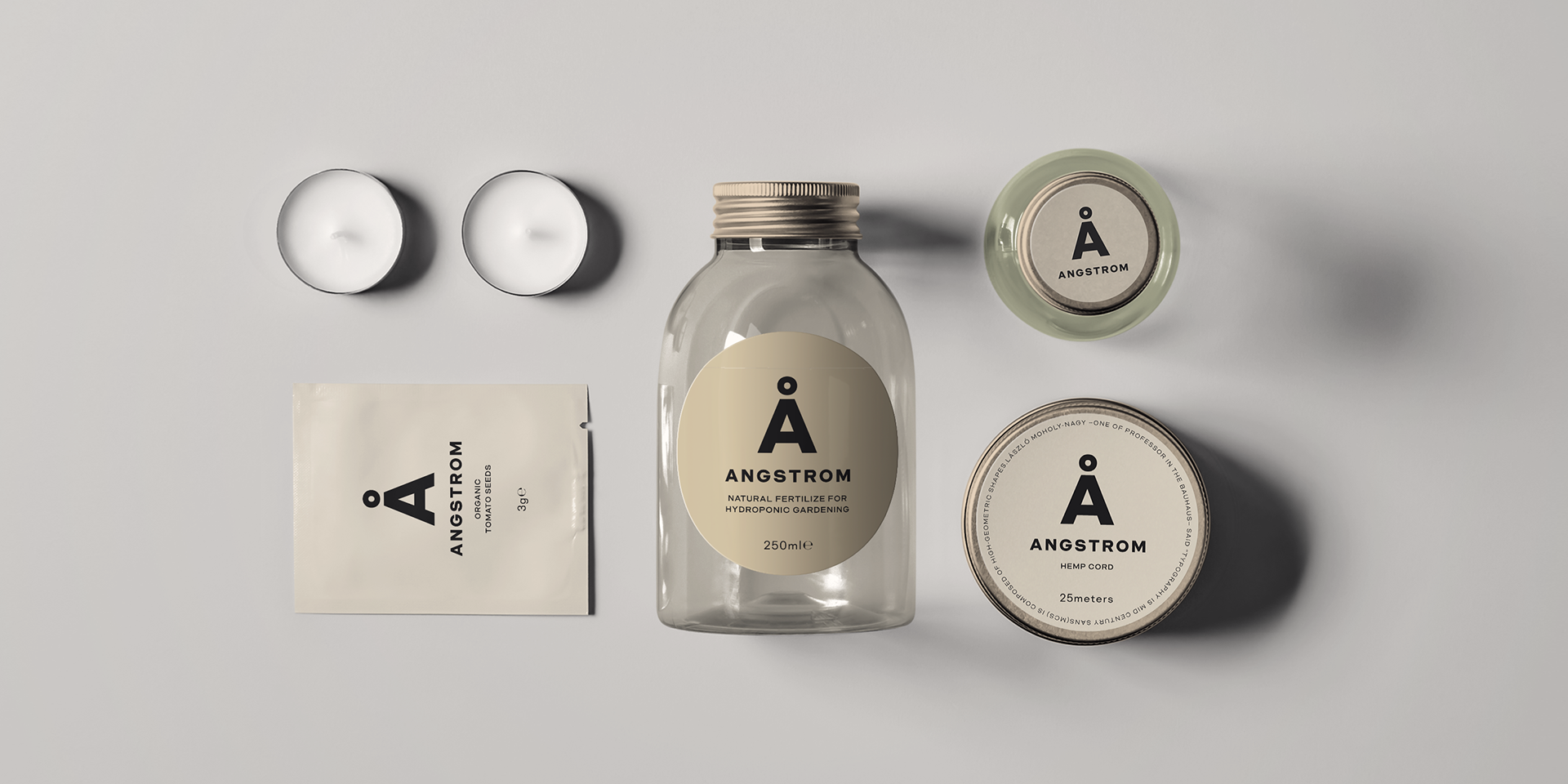
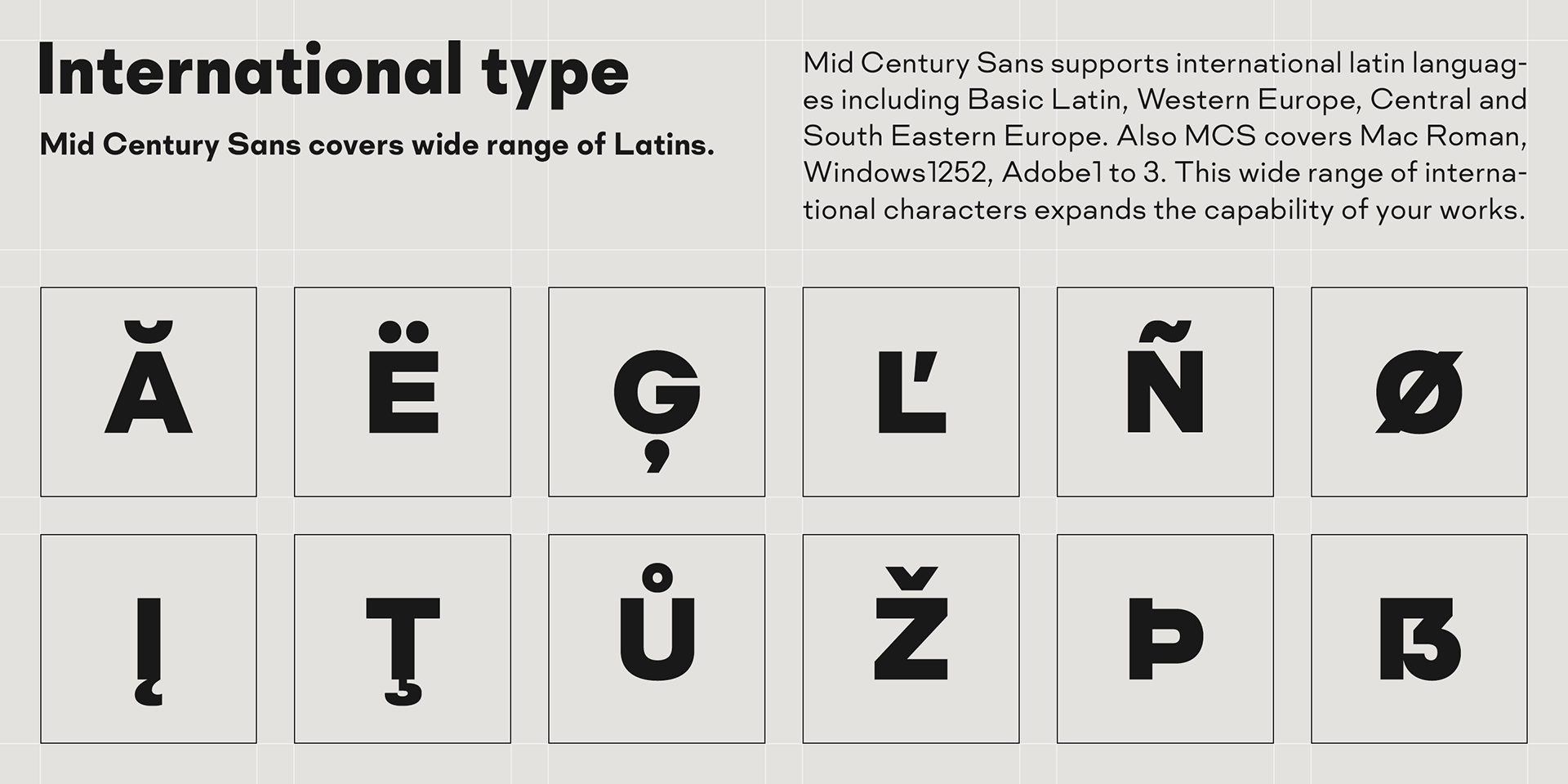

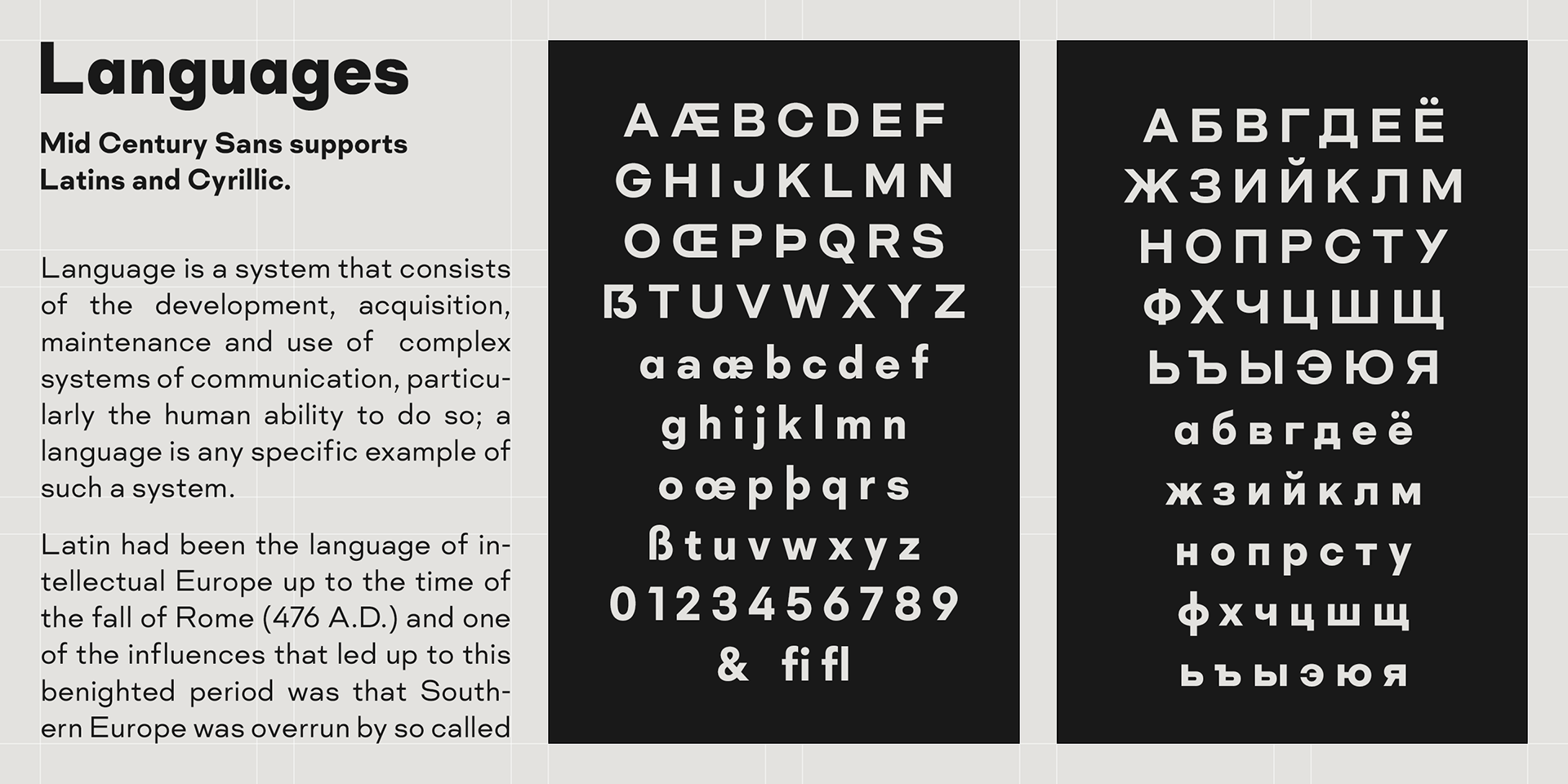
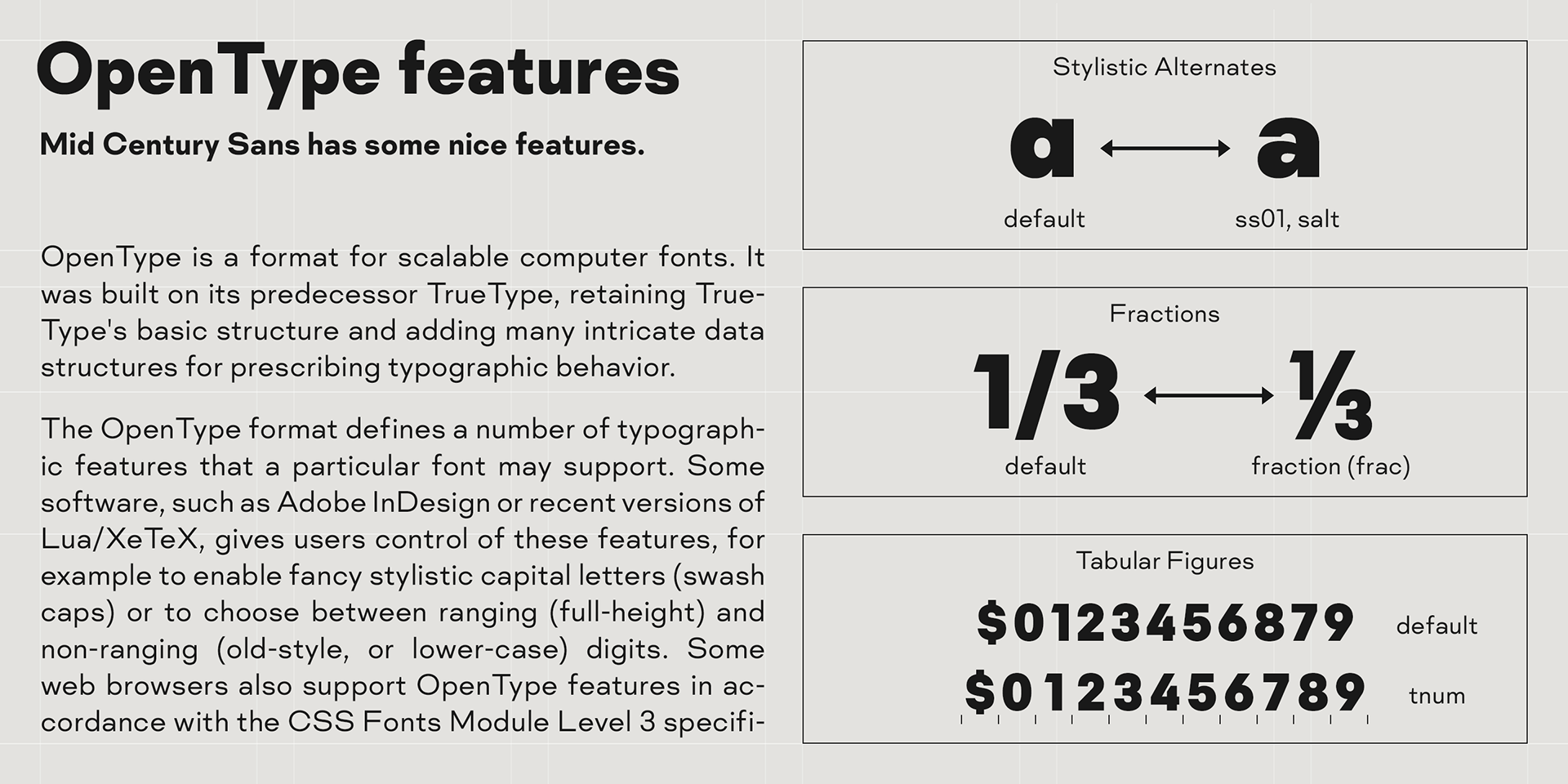
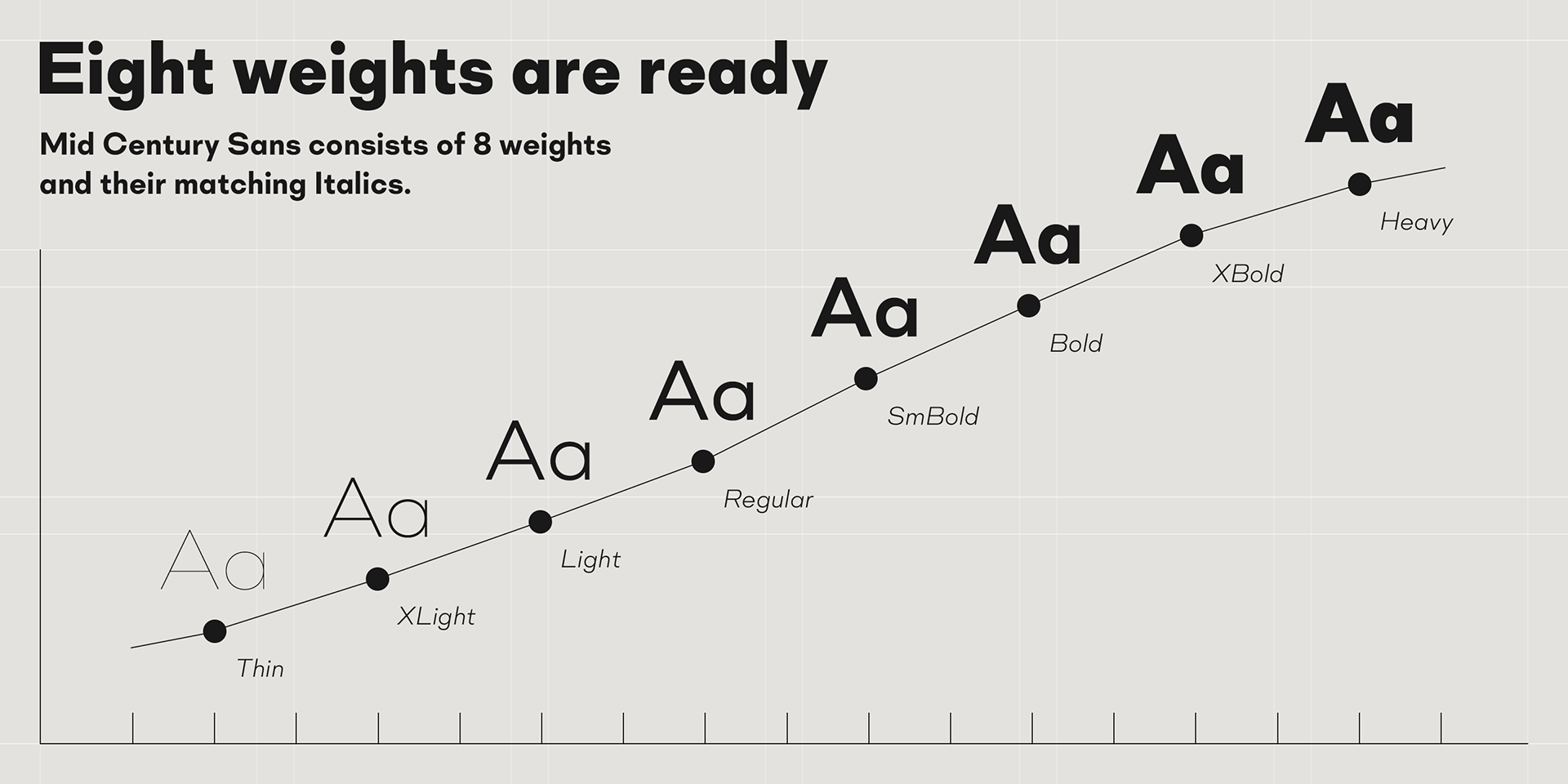
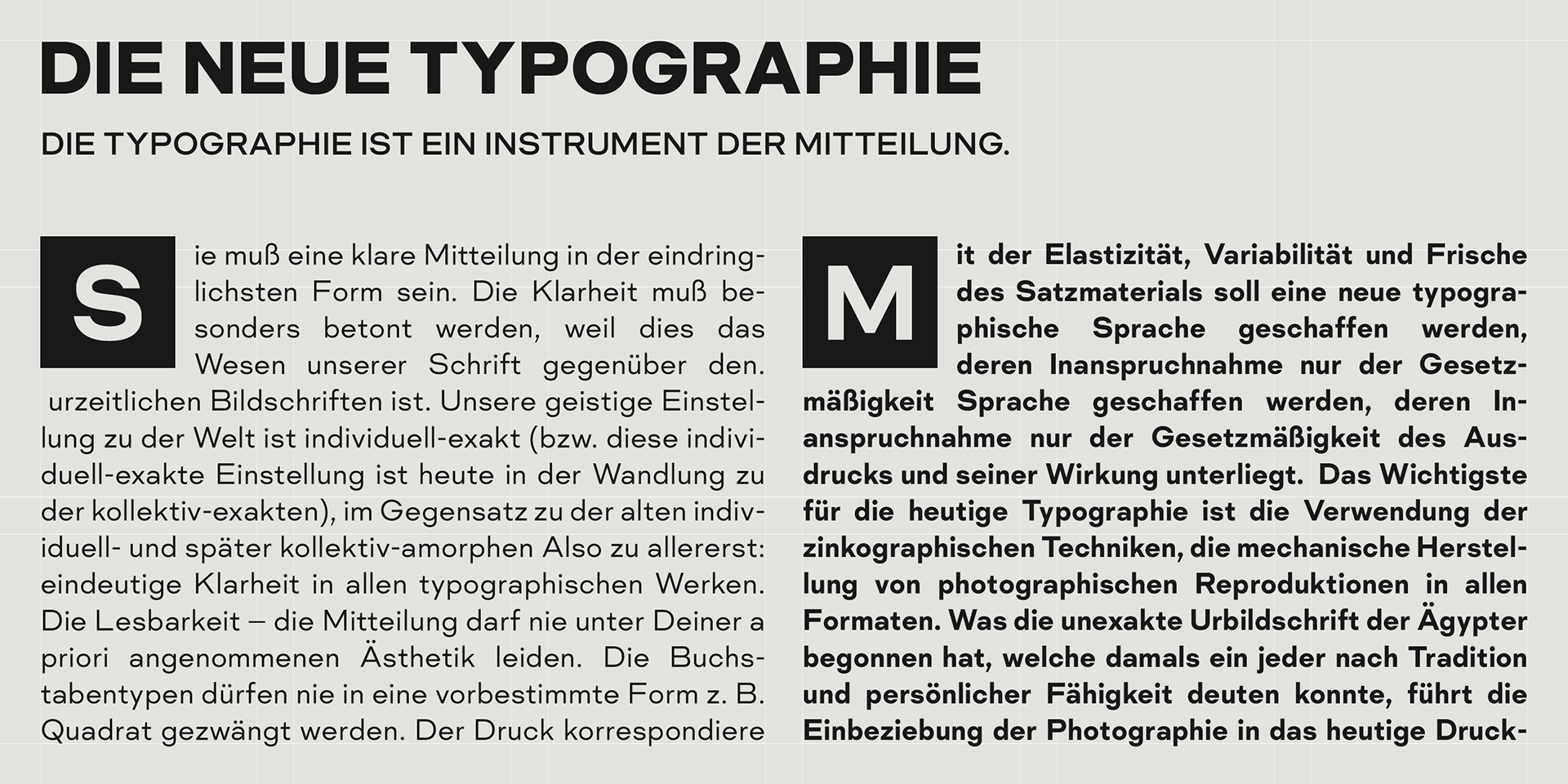
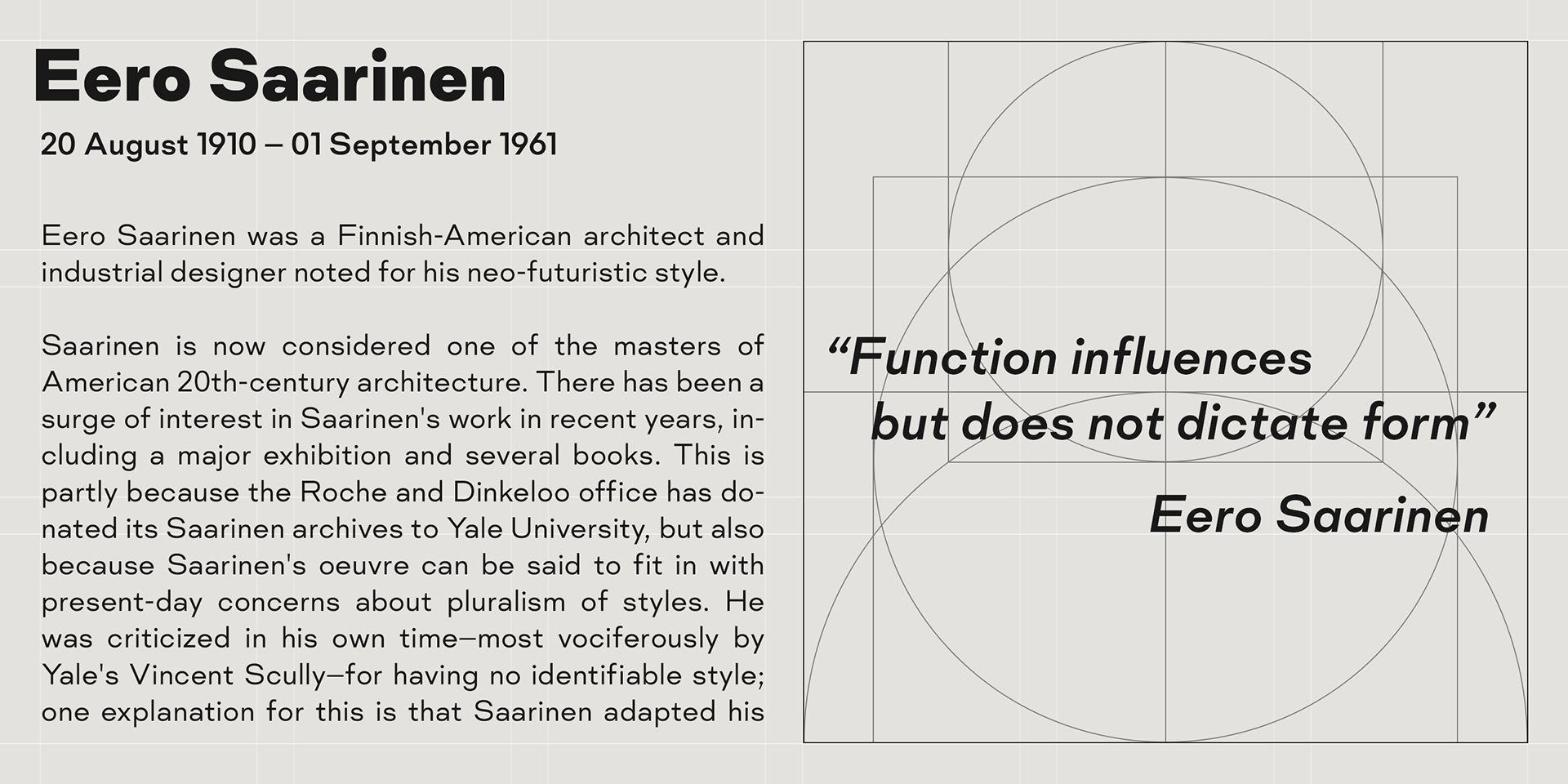
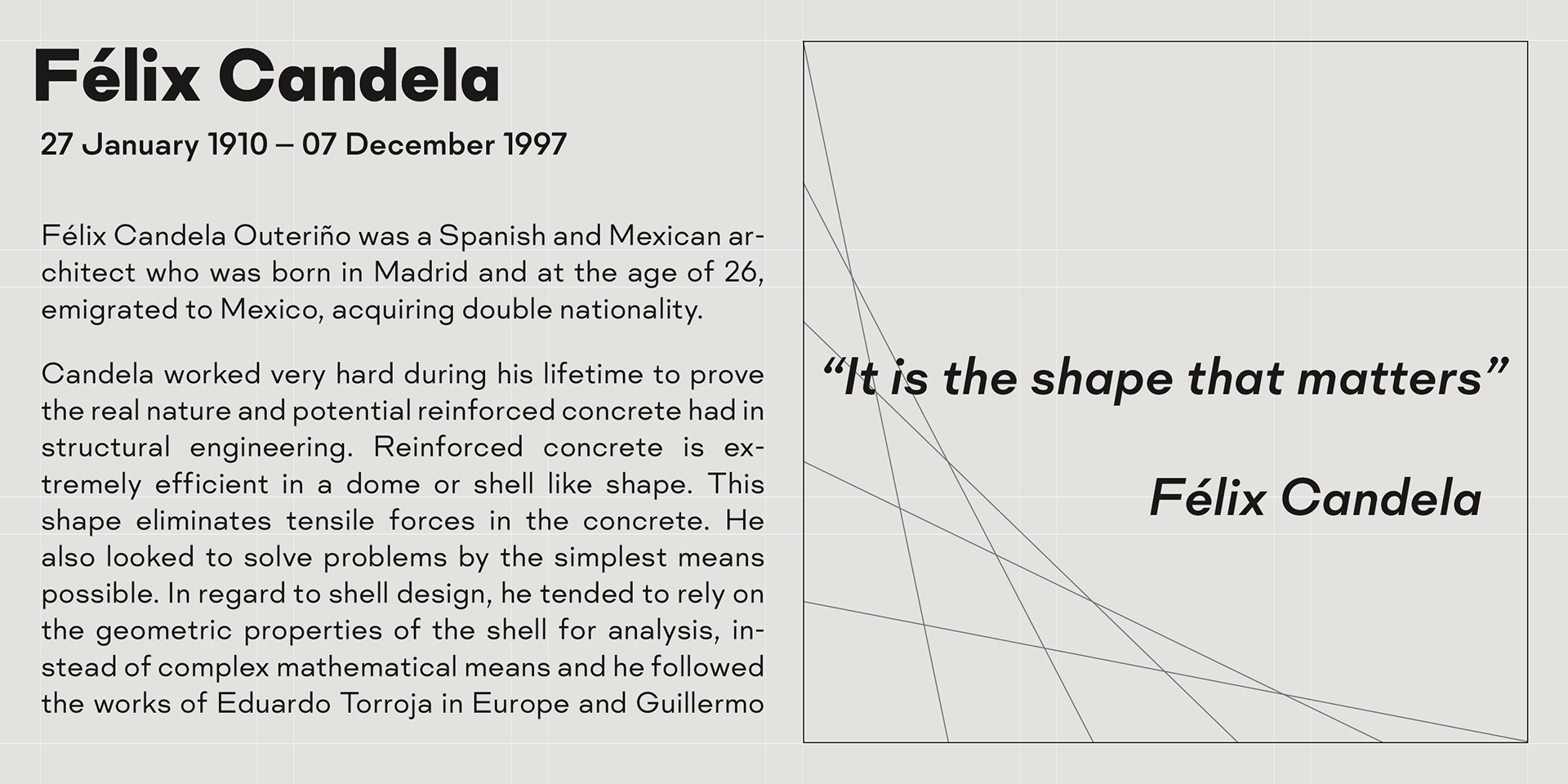
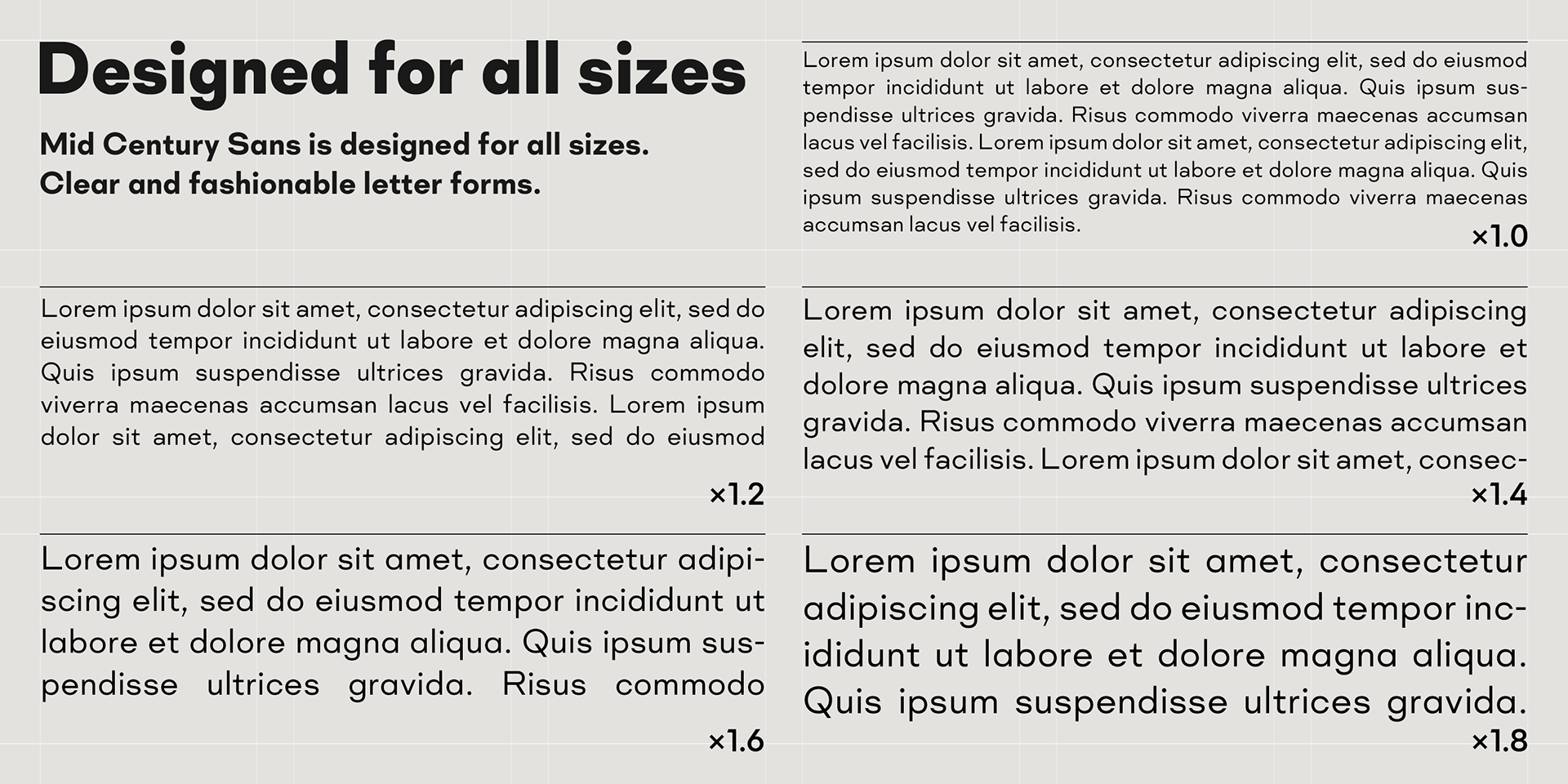
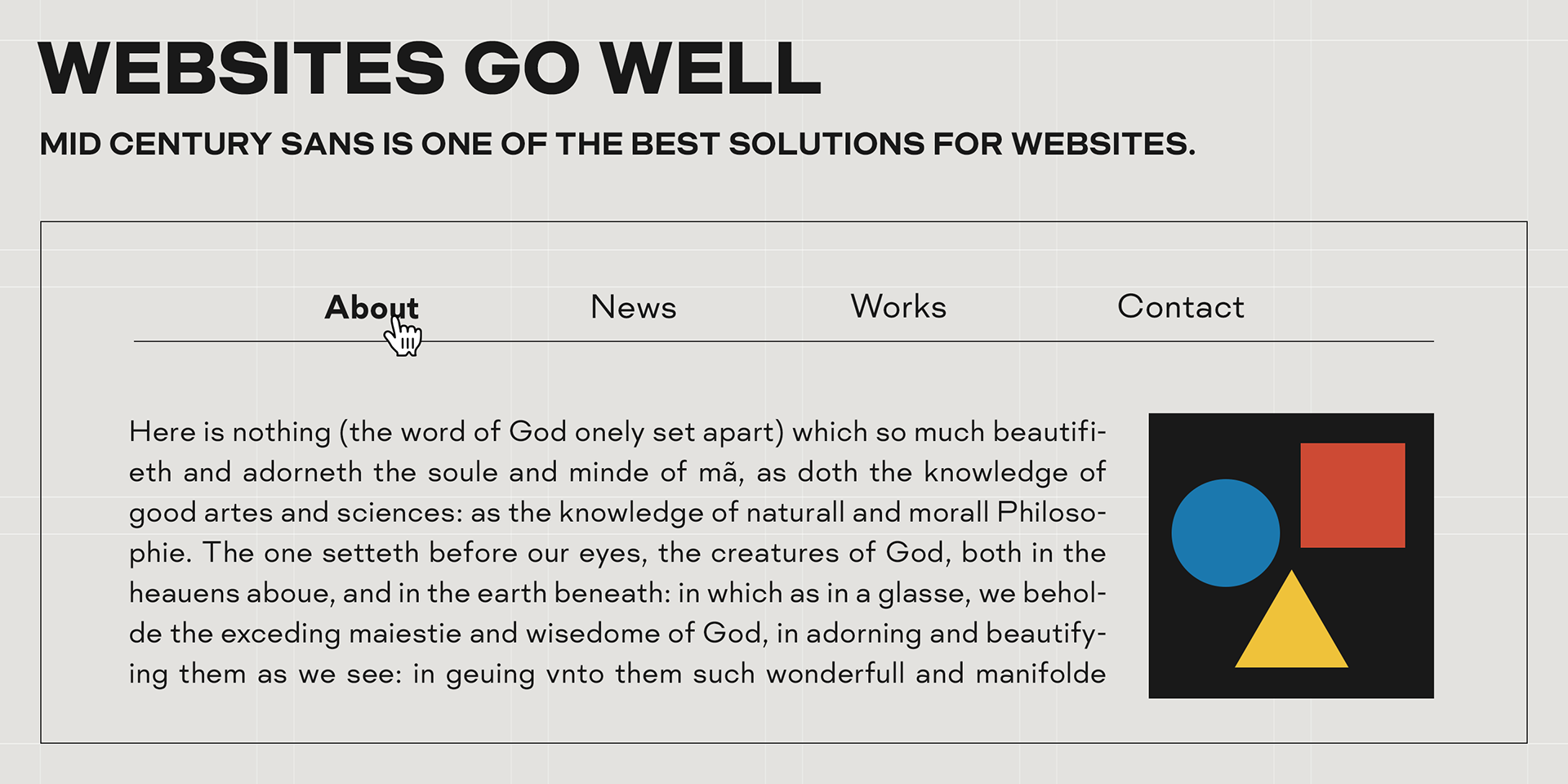
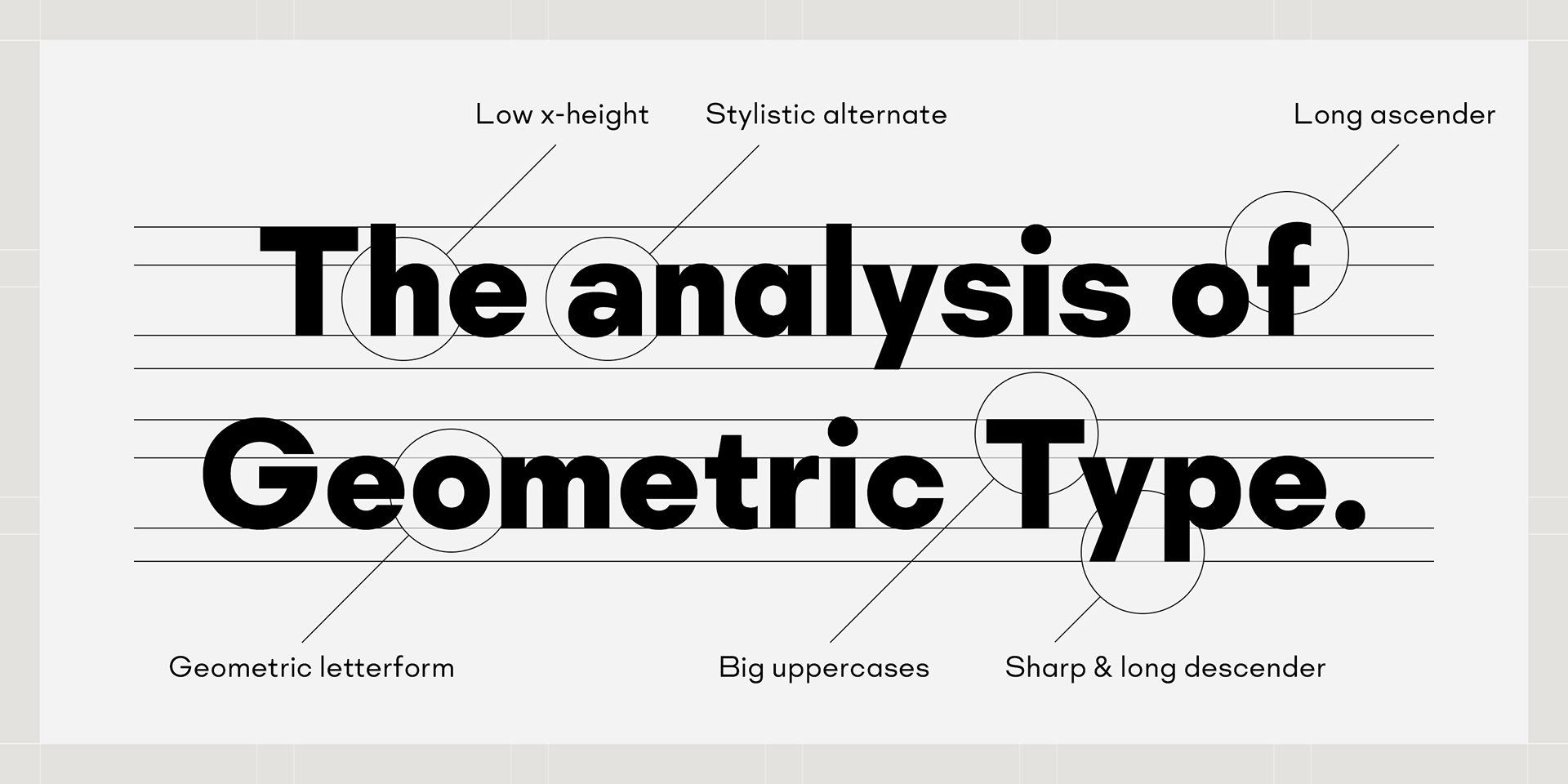
Mid Century Sans
Mid Century Sans (MCS) is a typeface built on the foundation of highly geometric shapes.
László Moholy-Nagy, a renowned Bauhaus professor, once said:
“Typography is a tool of communication. It has to be communication in its most intense form. The emphasis must be on absolute clarity, since this distinguishes the character of our own writing from that of ancient pictographic forms.”
“Typography is a tool of communication. It has to be communication in its most intense form. The emphasis must be on absolute clarity, since this distinguishes the character of our own writing from that of ancient pictographic forms.”
In the same spirit as early twentieth-century modern typefaces, MCS features clean, minimal, and highly efficient letterforms, stripped of any decorative elements. Every glyph is designed with clarity and functionality at its core.
But Mid Century Sans offers more than just modernist precision.
In the mid-20th century, a design movement known as Mid-Century Modern emerged—an American interpretation of the International and Bauhaus styles. This movement introduced a softer, more organic, and less rigid aesthetic. It was stylish, accessible, and warmly human.
Mid Century Sans blends the clarity of Bauhaus modernism with the charm of Mid-Century Modern design. While its basic forms are geometric, the strokes are infused with a friendly, human touch—creating a typeface that feels both modern and approachable.
The family includes eight weights with matching italics, making it highly versatile across various applications.
It supports a wide range of international Latin and basic Cyrillic languages, including Basic Latin, Western, Central, and South-Eastern European scripts. Encoding support includes Mac Roman, Windows-1252, and Adobe Latin 1–3, ensuring seamless use across global platforms.
It supports a wide range of international Latin and basic Cyrillic languages, including Basic Latin, Western, Central, and South-Eastern European scripts. Encoding support includes Mac Roman, Windows-1252, and Adobe Latin 1–3, ensuring seamless use across global platforms.
For advanced typography, the lowercase “a” includes a stylistic alternate, accessible via OpenType features.
